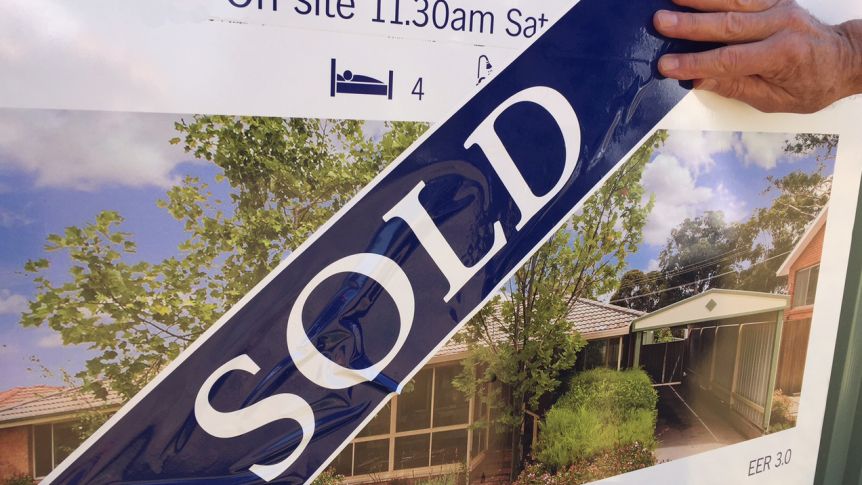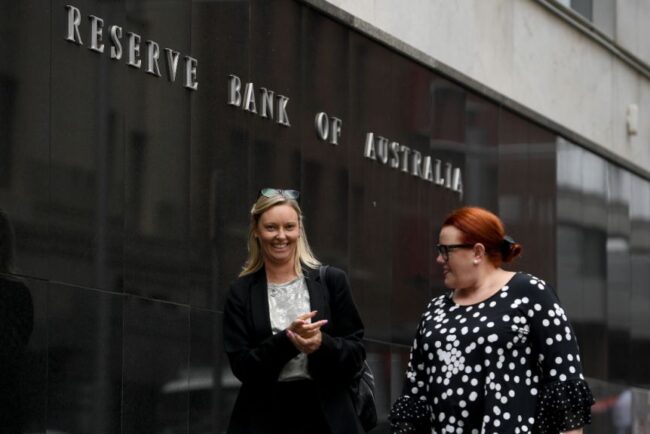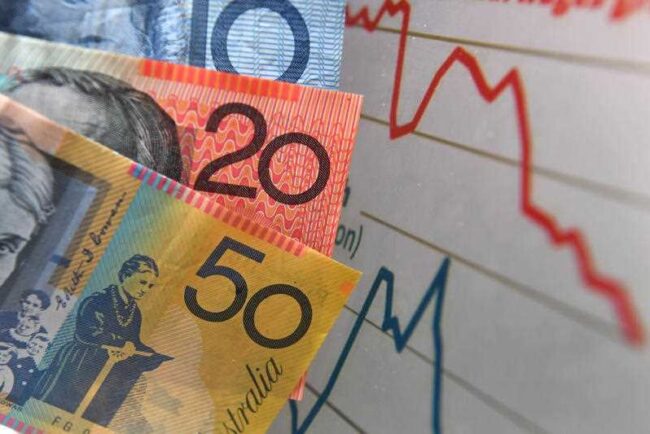The Reserve Bank meets on Tuesday to decide whether or not to lower its cash rate target to 0.1 of a percentage point (from 0.25 percentage points).
The Reserve Bank meets on Tuesday to decide whether or not to lower its cash rate target to 0.1 of a percentage point (from 0.25 percentage points).
That takes us very close to a negative interest rate.
But already some interest rates in Australia are negative — if you take account of inflation.
Annual inflation, as measured by the CPI, is currently 0.7 percentage points.
And as it stands, the effective overnight cash rate — that’s the interest rate the Reserve Bank attempts to influence every month and reflects the rate that banks lend to and borrow from each — is sitting at roughly 0.13 percentage points.
So the “value” of the money banks are lending out after adjusting for inflation is falling at roughly 0.7 per cent per annum (on the current rate of inflation), while the “rate of return” the banks receive from that money is well below that at roughly 0.13 per cent.
The banks’ money is being eroded over time, as opposed to growing — which is the effect of negative real interest rates.
Economists say this means the cash rate is “effectively” negative right now.
Will it go even lower?
The RBA’s monthly catch-up is called a “live” meeting, because the bank may very well to decide to lower the cash rate during its hours long meeting on the day — as opposed to simply justifying the decision during the meeting.
But all eyes will be in the accompanying statement from the governor, Philip Lowe. If you can look away from the Melbourne Cup Form Guide for a moment, it will be interesting to see if he makes reference to the bank’s further plans for easing monetary policy.
To date, Dr Lowe has said it’s “extraordinarily unlikely” the bank will move the cash rate into negative territory.
Then again, he was similarly unequivocal about the chances of the RBA engaging in a money printing program, and that quantitative easing program is now well established.
So how does negative interest rate policy work?
The big commercial banks have deposit accounts with the Reserve Bank, to record the value of their Exchange Settlement balances.
That’s a fancy way of saying the commercial banks bank with the Reserve Bank.
Normally the big banks receive a return on their accounts much like a regular customer would receive on their deposit accounts — only the rate is the cash rate.
In making the cash rate negative, the Reserve Bank effectively charges the commercial banks for holding money with it.
Most banks, the thinking goes, would shudder at the thought of paying the RBA to hold their cash overnight, so they’d make an effort to lend it out instead.
This is why it’s understood to be a stimulus policy — because it’s thought to encourage lending.
That’s the theory anyway.
Borrowers profit while depositors cop it
The reality is more of a highly distorted banking system.
Banks take bank deposits and lend out. That’s the basic business model.
Logic would dictate that if interest rates turn upside down, then customers would be charged for their deposit accounts and mortgagors would make money, not lose money on interest.
And that’s exactly right.
As the National Australia Bank’s chief economist, Alan Oster, puts it:
“Certainly if [the RBA] went negative, you would see fixed rates go down, and they’d all probably have a “one” in front of them,” he says.
“As a borrower what might happen, to use an extreme example, is that if you have a mortgage of $1,000, by the time you then pay it back, you might just give back the bank in total $900.”
As for depositors, the interest rates on most accounts would basically fall to an extremely low number.
Again, adjusting for inflation, your money’s better off under the mattress.
Most economists say it’s unlikely banks would move to charge depositors because it would lead, they say, to mass withdrawals and that has the potential to crimp the banks’ ability to lend.
On the edge of an economic disaster
Apart from RBA governor Lowe’s obvious reluctance to employ a negative interest rate policy, Mr Oster says if the policy were to be deployed, “it would mean the economy has crashed”.
That’s not hyperbole. The fear is that banks stand to lose billions under a negative interest rate scenario because the money they make on deposits pales in comparison to the billions lost on the slump in lending.
Yes, borrowers stand to make money on transactions, but with less funds to draw on, the banks are constrained in how much they can lend and the business model itself starts to collapse.
All eyes on the cash rate
So we’re left with a game of limbo — how low will the Reserve Bank go in lowering its cash rate target?
The “effective” cash rate is currently hovering between eight basis points and 13 basis points (0.13 per cent), because the money market has pushed the rate below the RBA’s cash rate target of 0.25 per cent.
But the effective cash rate — the rate which influences your mortgage — could easily fall very close to zero.
From there, the bank will be trying its best to lower longer-term interest rates.
You can see why the RBA governor has tried to shift the focus to what the Federal Government can do in recent years.
Dr Lowe is painfully aware of the potential limitations of the bank’s arsenal.
Source : www.abc.net.au



